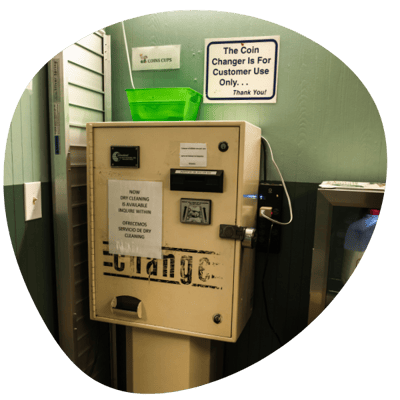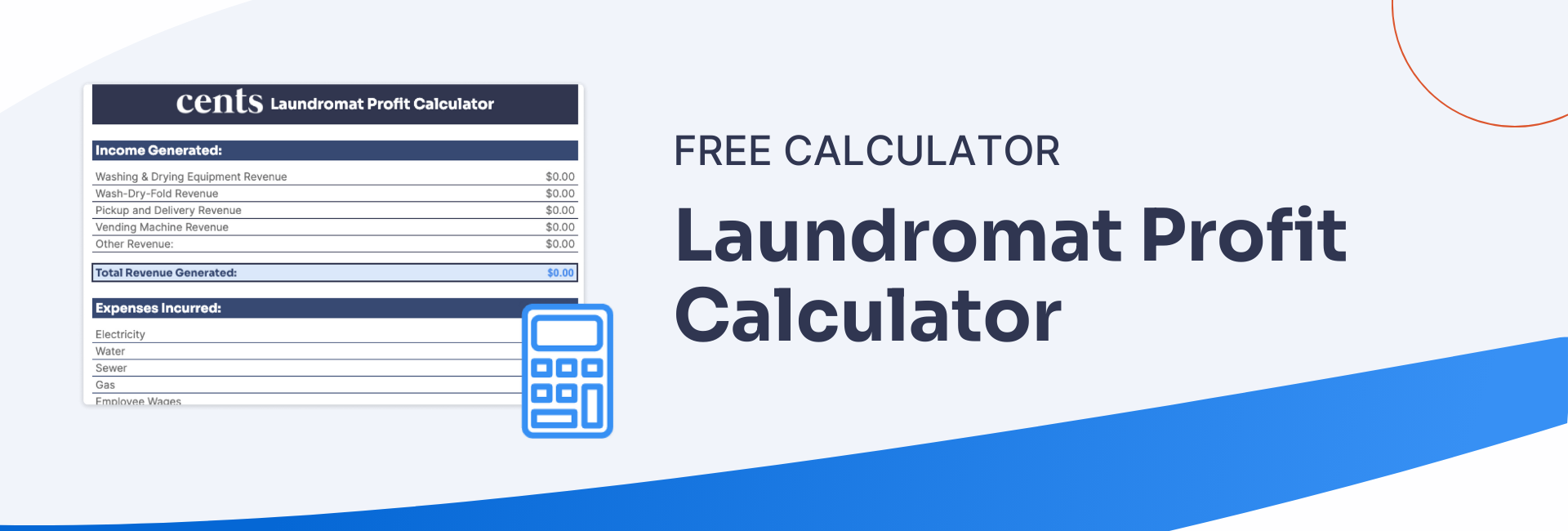A laundromat can be an incredibly profitable business model—as long as you nail the laundromat pricing strategy. You may wonder, how hard could it be? But in fact, a lot goes into determining what pricing model best suits your laundromat. Your success depends on balancing affordability for customers with profitability for your business. In this article, you'll discover the key factors influencing laundromat pricing, common pricing mistakes to avoid, and the best pricing models to implement.
Factors influencing laundromat pricing
Setting the right prices for your laundromat services is not a one-size-fits-all endeavor. It requires careful consideration of various factors to strike a balance that maximizes profits while ensuring customer loyalty. To create a successful pricing strategy, you must first understand the factors that influence pricing decisions. Here are the main variables that determine the best pricing model for your laundromat:
1. Operational costs
The daily and monthly costs involved in running your laundromat are important considerations and keep in mind—your water bill is only the tip of the iceberg. Here are the some common laundromat operating costs you should take into account when calculating prices that work for you:
-
Rent or mortgage payments
-
Utilities (water, gas, electricity, sewage)
-
Equipment maintenance and repairs
-
Cleaning services
-
Employee wages
-
Security
-
Insurance
-
Advertising and marketing
-
Supplies (laundry detergents, fabric softeners, vending machine products)
-
Credit card processing fees
-
Contingency fund
-
Technology and software (point-of-sale systems, laundry management software)
Read more: Laundromat Owner’s Guide to Tax Season
Download our laundromat profit calculator to find out how much profit your laundromat is making each month, quarter, and year.
2. Location and demographics
Location and customer demographics play a major role in pricing. Simply put, your pricing shouldn’t exceed or drastically undercut what your customers are willing to pay, which is mainly determined by where they live, the saturation of laundromats in the area, and your customers’ income levels. Here are some basics to take into account:
Location:
-
Urban Areas: Higher demand due to limited in-unit laundry options, allowing for slightly higher prices.
-
Suburban Areas: Lower demand, requiring competitive pricing strategies.
-
Affluent Neighborhoods: Customers may be willing to pay premium rates for added convenience.
-
Lower-Income Areas: Competitive pricing and discounts attract budget-conscious customers.

3. Service types
Laundry businesses can offer a variety of services spanning from self-service to full-service, and specialty services. Each service deserves their own unique pricing model. Here are the most common services laundromats offer:
-
Self-service laundry
-
Dry cleaning
-
Specialty laundry (bedding, sports equipment, delicate fabrics)
-
Commercial laundry (services for business such as hotels, restaurants, and medical facilities)
-
Pickup and delivery
4. Revenue fluctuations
Of the laundromats surveyed in a Coin Laundry Association study, nearly 70% of laundromat owners experienced an increase or decrease in annual revenue from 2023 to 2024. Revenue fluctuations are totally natural, even for the recession-resistant laundromat business model, and should inform your laundromat pricing strategy. No matter which side of the coin you find yourself on, make sure to factor your annual revenue trends into your pricing model.
Common pricing mistakes in the laundromat industry
Many laundromats that have come before you have made detrimental decisions in their laundromat service pricing. Let their mistakes be your lessons! Here are the top pricing mistakes in the laundromat business:
-
Over/Under Pricing
-
Ignoring operational costs
-
Neglecting location and demographic data
-
Inconsistent pricing models
-
Failure to adapt
-
Overly complex pricing structures
-
Lack of discounts and promotions
-
Ignoring customer feedback
-
Not leveraging technology
Depending on which of these services you offer in your laundromat, you’ll need to incorporate more than one pricing model. In the following sections you’ll learn about types of pricing models and how to avoid the common laundromat pricing mistakes.
Webinar: How to Navigate Pricing at Your Laundromat
Types of laundromat pricing models
The beauty of laundromat pricing is in the options! Whether you're considering per bag, flat rate, per pound, tiered pricing, or subscription models, understanding your options will help you decide on a pricing strategy that supports your business goals and meets customer expectations. Here are the top five pricing models, including typical use-cases and pros and cons:

1. Per bag pricing
In the per bag pricing model, customers are charged a flat fee for laundry service based on the size of the bag they use, typically with a maximum weight limit (e.g., 30 lbs). This model is often used for pickup and delivery services.
Pros:
-
Simplicity: Easy for customers to understand with no need for weighing laundry.
-
Predictable pricing: Customers know exactly what they will pay upfront.
Cons:
-
Limited precision: May not accurately reflect the actual weight of laundry, leading to potential undercharging or overcharging.
-
Less flexibility: Customers might try to stuff more into the bag to maximize value, which can lead to overloading machines.
Why choose this model? You may opt for per bag pricing if you offer pickup and delivery services to simplify pricing for customers. This pricing model is best for those who prioritize ease of use and transparency. For example, a laundry service may charge $40 for a standard 30lb bag of laundry.
2. Per pound pricing
Per pound pricing charges customers based on the actual weight of their laundry. It's a common and straightforward pricing model, often used for self-service and drop-off services.
Pros:
-
Precision: Charges customers only for the exact weight of their laundry.
-
Flexibility: Accommodates customers with varying laundry loads.
Cons:
-
Complex for customers to estimate cost in advance.
-
Can be less predictable for budget-conscious customers.
Why choose this model? Per pound pricing is a standard choice for many laundromats because it offers precise billing. It's suitable for those who value fairness in pricing. For example, a laundromat might charge $1.50 per pound for laundry services.
3. Flat rate pricing
Flat rate pricing charges customers a fixed fee for a specific laundry service, regardless of the quantity or weight of laundry. It offers a consistent price for a particular service package. This pricing model works well for speciality services and commercial customers.
Pros:
-
Predictability: Customers know the exact cost in advance, promoting transparency.
-
Convenience: Simplifies billing and minimizes customer decision-making.
Cons:
-
Potential for overcharging: Customers with lighter loads may feel they are not getting value for money.
-
Limited flexibility: May not accommodate customers with varying laundry needs.
Why choose this model? Laundromats might prefer flat rate pricing when offering specialized services like dry cleaning or premium laundry services. For instance, a laundromat could charge a flat rate of $25 for a premium dry cleaning package.
4. Tiered pricing
Tiered pricing involves offering different levels of laundry service at various price points. Customers can choose from basic to premium service packages.
Pros:
-
Customer choice: Appeals to a broader customer base with varying needs and budgets.
-
Revenue optimization: Allows laundromats to capture different segments of the market.
Cons:
-
Complexity: Requires effective communication to explain the differences between tiers.
-
Potential for decision paralysis: Customers might find it challenging to select the right tier.
Why choose this model? Laundromat owners looking to cater to a diverse customer base with varying preferences and budgets can benefit from tiered pricing. For example, they might offer a basic laundry service for $10, a standard service for $15, and a premium service for $20.
5. Subscription pricing
Membership or subscription models involve recurring orders, such as weekly or biweekly laundry pickups. Customers pay a subscription fee in exchange for regular laundry service.
Pros:
-
Customer loyalty: Encourages long-term relationships with customers.
-
Predictable revenue: Provides a steady stream of income.
Cons:
-
Commitment: Customers may hesitate to commit to ongoing subscriptions.
-
Management complexity: Requires efficient scheduling and logistics for regular pickups and deliveries.
Why choose this model? Laundromats seeking to build a loyal customer base and ensure a consistent revenue stream may opt for membership or subscription models. For instance, a laundromat could offer a monthly subscription for $50, providing customers with weekly laundry pickups.
Strategic techniques for laundromat pricing
In addition to pricing types, you also have to consider your approach to pricing. Choosing the right one for your business model can make all the difference! There are four main pricing techniques you can implement in your laundry business.
1. Competitive and reasonable pricing
Setting price points that are competitive within your local market while still providing value to customers is a tested and effective approach.
-
Why use it: Competitive and reasonable pricing can positively impact your business by attracting more customers, increasing customer loyalty, and maintaining a steady flow of revenue. It presents your laundromat as an attractive and affordable option in your area.
2. Discounts and promotions
Discounts and promotions have a place in every pricing model. Implementing these from time to time will incentivize customer behavior, such as visiting during less busy hours or taking advantage of bundled services.
-
Why use it: According to a Coin Laundry Association study, the average laundromat is open for service 17-19 hours a day, but there are some hours that experience much lower foot traffic than others. Well-timed discounts and promotions can boost customer traffic during specific periods, improve machine utilization, and increase overall revenue. They also create a sense of urgency and excitement, encouraging customers to take advantage of special offers.
3. Bundling services
Bundling laundry services, such as wash-and-fold with dry cleaning or offering discounts for combined services, can increase the average transaction value and encourage customers to use more of your services.
-
Why use it: By bundling services, you can maximize the value customers receive while optimizing your laundromat pricing strategy. It encourages customers to explore additional offerings, driving higher-value sales, and improving customer satisfaction.
4. Loyalty programs
Establishing loyalty programs that reward repeat customers with discounts, free services, or other perks fosters a sense of loyalty and encourages frequent visits.
-
Why use it: Loyalty programs can significantly impact customer retention and frequency of visits. They create a loyal customer base that keeps coming back, driving consistent revenue and word-of-mouth referrals. It's a powerful tool for building lasting relationships with your customers.
Read more: How a Laundromat Loyalty Program Can Grow Your Business
How to become more efficient with payment processing

Efficiency in payment processing is just as important as your pricing model. Implementing payment processing technology, like Cents digital payment solutions, can streamline your operations, automate time-consuming tasks, and give you data-driven insight into what pricing models are really working.
The role of technology in laundromat pricing
Digital payment systems, like Cents Digital Payment Systems, enable laundromat owners to implement dynamic pricing models, offering multiple payment options while streamlining revenue collection. Real-time insights from Cents Connect empower you to make informed pricing decisions based on customer behavior and trends. When you have the power to implement a combination of payment models, you can actually unlock add-ons and bigger sales with each customer.
As Steve Burk from The Laundry Bin said, "I looked at the amount of times a customer selected extra wash or extra rinse (which cost extra) before Cents card readers and after. Since installation, extra wash usage has gone up 85% and extra rinse has gone up 21%."
Automation in pricing
Efficiency in pricing involves automation, which saves you time and maximizes your profit margins. Tools for automated price adjustments, backed by data insights, allow you to implement demand-based pricing during peak hours and offer discounts during off-peak periods. You can also track the performance of discounts and promotions in real-time to refine your strategies. Sure, you could attempt to do this without the technology, but it would be tedious, time-consuming, and marked by guesswork.
Evaluating and adjusting your pricing strategy
Tracking key performance indicators (KPIs) is important to accurately assess the success of your pricing strategy. Utilize Cents Digital Payment Systems’s reporting and analytics features to monitor machine utilization, customer loyalty, and revenue trends. By integrating Cents Digital Payment Systems and Cents Business Management into your laundromat's ecosystem, you gain the tools needed to optimize pricing, boost efficiency, and continuously refine your approach.
These tools allow you to take the guesswork out of an antiquated industry and take control over the success and growth potential of your laundry business.
Read more: Types of Laundromat Payment Systems Explained
Implementing a new pricing strategy
When it comes to pricing changes in your laundromat, thorough due diligence is key. Any alteration to your pricing strategy should be approached with care and consideration for your customers and your bottom line. In this regard, Freedom from Laundry in Chattanooga, offers valuable insights. Founder Aprill Ashley's journey showcases the power of evolving pricing models to meet community needs. Initially championing a 'buy the bag' model, she later transitioned to a more flexible approach, charging a flat fee for up to 20 pounds and then an additional fee for every extra pound, all while introducing a gas fee to remain transparent with fluctuating fuel costs. Aprill's story highlights the importance of adaptability in pricing strategies.
Here are the steps she took for a smooth price change:
-
Stay ahead of pricing changes: Pricing adjustments may be necessary for you to remain competitive and profitable. To avoid surprises, keep yourself updated about market trends, local competitors, and the changing needs of your customer base. Also, take into account your operational costs, as these should also influence pricing. According to the Coin Laundry Association, 10-24% of the average laundromat’s gross revenue is spent on payroll, so this will have a major effect on how you approach your pricing.
-
Communicate with your customers: When changing up your pricing, talking to your customers is a non negotiable step. Informing your customers well in advance shows them that you value them and you’re committed to ethical and transparent business practices. You should use a variety of communication methods to maximize your reach, including signage, social media, your website, and in-store notifications.
-
Gather customer feedback: Before committing to a new pricing strategy, you should give it a trial run first to gather customer feedback. This allows you to assess how the changes resonate with your clientele. Encourage customers to share their thoughts and opinions, whether through surveys, comment cards, or online feedback forms. This input will help you fine-tune your pricing strategy to the requirements of your most important asset: your customers.
-
Remain flexible: Keep in mind, not all pricing changes will yield immediate results. Be patient enough to collect adequate data and flexible to adjust prices based on the responses you get.
Achieving Long-Term Profitability
Building a profitable laundromat pricing strategy requires balancing affordability with business sustainability. By leveraging data-driven pricing models, offering competitive discounts, and integrating digital payment technology, you can optimize your laundromat’s revenue while ensuring customer satisfaction. Implement these pricing strategies to position your laundromat for long-term success in even the most competitive markets.
Download our laundromat profit calculator to find out how much profit your laundromat is making each month, quarter, and year.
.png?width=2196&height=2196&name=OS%20(1).png)

-3.png?width=224&height=213&name=Accelerate%20(2)-3.png)









